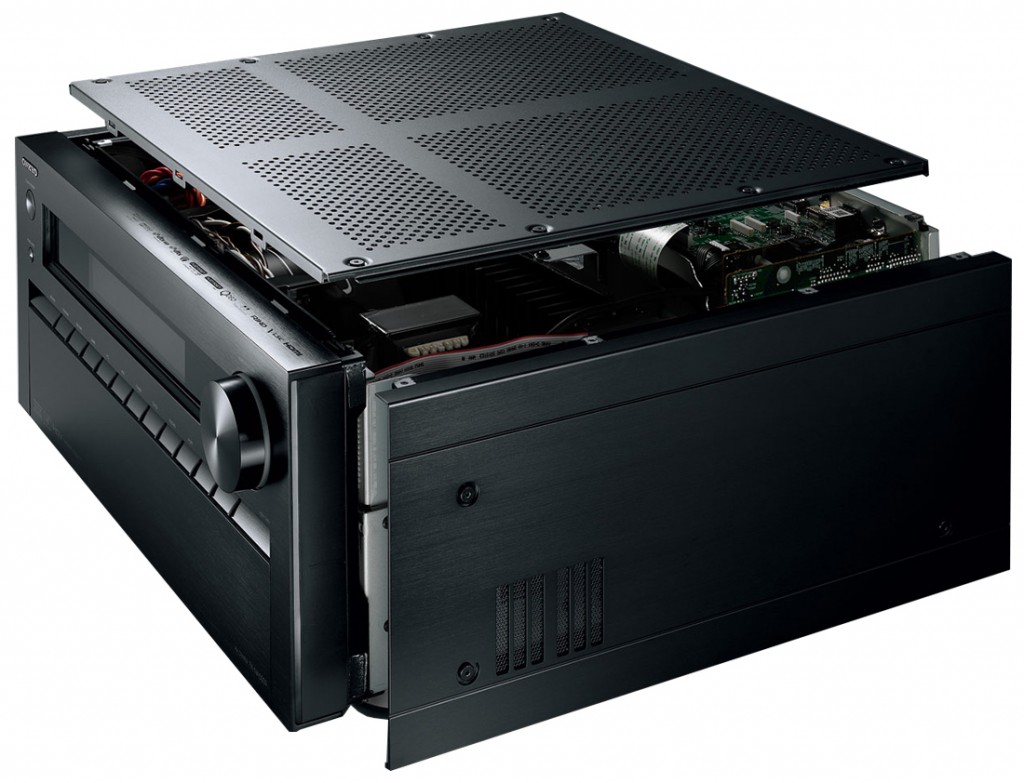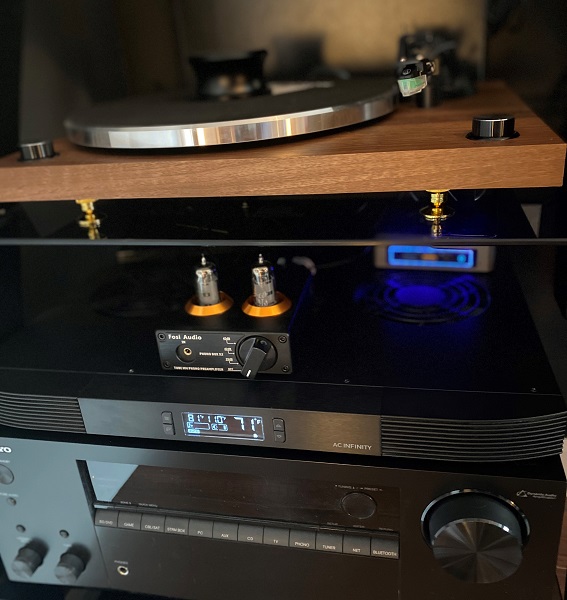Can I Stack My Home Theater Gear?
It can be surprising how quickly we acquire home theater gear. You start with just a TV and the next thing you know you have an AV receiver, game system (or two), UHD player, a battery backup, and who knows what else. There are boxes everywhere! You never planned for this! Your current furniture can’t hold all your gear and you don’t have the money to buy something AV-specific right now. Can you stack some of this home theater gear? Will it hurt it somehow? Let’s discuss!
Weight Limits
Before you start stacking your home theater gear on your Ikea bookshelf (or whatever), be careful of the weight. Home theater gear, specifically amps and AV receivers, can weigh a lot. Don’t assume that your shelving unit or furniture can take all that weight. If you aren’t sure, and can’t find any information about your furniture, put your heaviest gear on the lowest shelf and check periodically for shelf bowing.
Heat Dissipation
Other than weight, the real thing that you need to worry about when stacking home theater gear is heat. Any piece of gear that is powering speakers (amps or AV receivers) or doing video processing (AV receivers and game systems) will generally create heat. Many of these devices have recommendations (we’d say requirements) for space around them. Not just space inside of an enclosed cabinet, but space that is open to the rest of the room. This is why home theater racks either are completely open (no walls, fronts, or backs) or have integrated fans to circulate air.

If you are planning on placing gear inside of an enclosed space, it can’t be any of that gear that needs fresh airflow. How do you know? Other than looking at the manual (it will definitely be in there somewhere), you can look for vents. Gear such as AV receivers will have vents to allow airflow. Those vents will nearly always be on the top unless there are integrated fans to pull air through the device. Anytime you see those vents, you know you can’t stack that home theater gear. Any gear that might be on top will definitely block those vents and cause your gear to overheat and go into protection mode (at best) or just break (worse-case).
Again, it is important to give these types of equipment access to lots of air. Even if you give them the required space, if that space is enclosed in a cabinet, it will quickly heat up the available air causing the equipment to overheat. No, aftermarket fans will not help. Not only will this damage the gear that is creating the heat, but it will also affect any other gear you have in that space. Electronics don’t like heat. That’s just a fact.
What If You Don’t See Vents?
If you don’t see any vents on your gear, we’d still recommend looking at the manual to see if the manufacturer recommends a certain amount of space around the gear. Some vents are so expertly integrated into the design of the device that they are hard to spot (modern game systems can be this way). If you are sure that the device isn’t sensitive to heat and doesn’t have vents, then you can stack it without fear.

Examples of gear that can normally be stacked are players of just about any type (DVD, Blu-ray, Ultra HD Blu-ray), streaming boxes, and other cool-running devices.
But I Have to Stack!
If you really are space-challenged, you might have no choice but to stack your home theater gear. We get it. You’re not the only one that has found themselves in this situation. Here’s the real problem with people stacking gear: people want to put the heaviest on the bottom. That makes sense to them because they don’t want the heaviest gear to crush the lighter stuff.
The problem is that the heavy gear is almost always the gear that creates the most heat. If you put it on the bottom, not only are you blocking the vents but the heat will cook the gear that is above it. This means that the proper way to stack is coolest on the bottom and warmest on the top. Yes, your AV receiver will end up being on the top of that stack. That may make you uncomfortable because of the weight, but it is best for heat.
Again, your gear will need access to a considerable amount of air. No shoving it inside a cabinet. If you have to put it in a cabinet, you’ll need to cut holes in it and install fans for ventilation. Also, you still want to separate the gear. Yes, some gear has feet (AV receivers in particular), but we’d recommend even more separation. Small pieces of scrap wood can be used though hockey pucks are a common solution that looks much better.
If you have to stack, hot over cool, access to air, and separate your gear.


